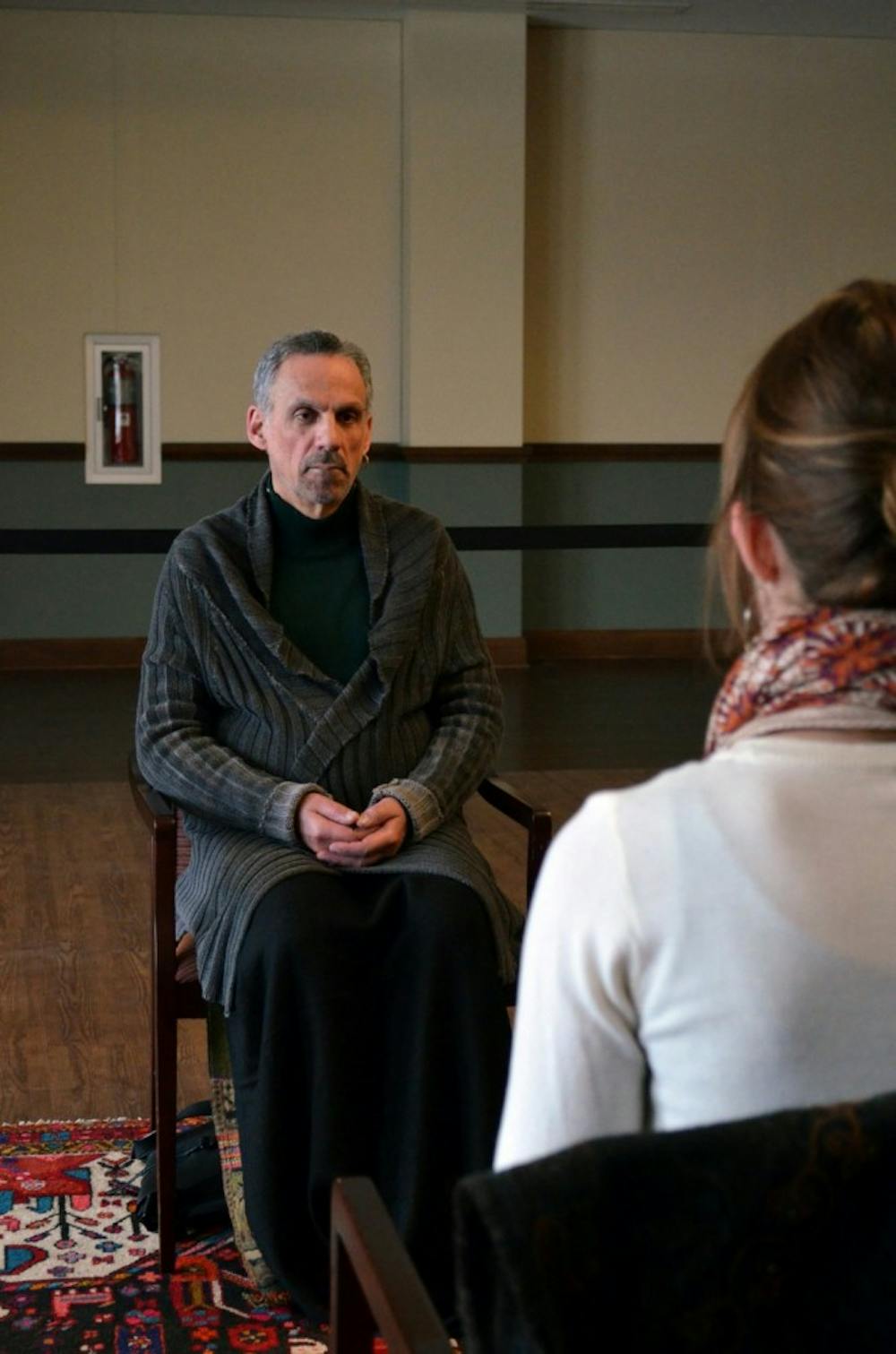In one of the large Lakeside Conference Rooms at Elon University, there is a simple arrangement: two chairs facing each other, an oriental rug and a plain sign asking for silence. Ken Hassell, associate professor of art, sits silent and motionless in one of the chairs with a blanket over his lap.
His eyes are closed until a visitor sits across from him. Then his performance begins. He looks directly into the eyes of the visitor until they leave.
For seven hours a day for three days, Hassell performed for the Department of Art and Art History’s biennial faculty exhibition.
This meditative performance will open up different ways of experiencing another human being in a nonjudgmental atmosphere, Hassell said.
“I was pretty nervous,” said senior David Wood. “I sat down and my heart was pounding a little bit. We were staring at each other and he calmed me down. Even though there were no words you feel vey relaxed in there.”
The performance’s goal was to expel premeditated and definite ways of examining others. Hassell said he hopes each individual interaction will help both parties to experience each other in a way that exceeds formulaic identity.
“My intention, in this context, is for the participants, the audience and the entire university to be a part of this process that might provoke conversations and insights into diversity and inclusiveness well beyond this performance and into the classroom and daily life,” Hassell said in a media release.
All Hassell asks of his visitors is for their silence during the "conversation."
“I gave it a shot,” Wood said. “I’ve never done this before. It interested me to see how I feel and we saw other people do it. Some people were crying and laughing. But it was a good experience and I’ll probably never get to do it again.”
Hassell is re-fabricating an idea that originally came from Marina Abramovic’s performance art. She created the idea at the Museum of Modern Art in 2010 by sitting in a wooden chair for seven hours a day. Museum visitors were invited to sit across from her.
Hassell was quick to acknowledge that his presentation is very different from Abramovic’s. While she carried out her art in the MoMA, Hassell performed in the private university in North Carolina where there are many students, faculty members and staff.
In both Abramovic and Hassell’s performances, the participant and artist are on an equal level of power, understanding and inclusiveness. For each to work, there must be public involvement.
“I think that people underestimate how difficult it is to sit there and really be silent,” Wood said. “He has that self-control and strength it takes to sit there and just stare at someone and have no emotions. For that amount of time, it’s pretty hard.”
Freshman Osca Opoku sat in the chair facing Hassell for almost 20 minutes.
“After a while I started to feel -- and we had been pretty still for a while -- like I might be looking in a mirror and he might be me,” Opoku said. “It sounds kind of crazy but it's a very interesting experience. I think you have to try it for yourself to see what you feel.”
At the end of the second day, Hassell said he felt exhausted. He had interacted with many students and faculty with a lot of downtime in between visits. Some people stayed for less than a minute while others silently “conversed” with him for almost half an hour. He said those who stay longer tend to get more out of the experience.
“After a while, they transform,” Hassell said. “They become different. There’s something happening within themselves that allows their face to almost transform in some way and show something different about them. It’s just remarkable to me.”


